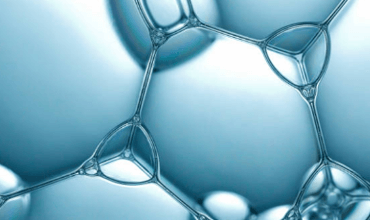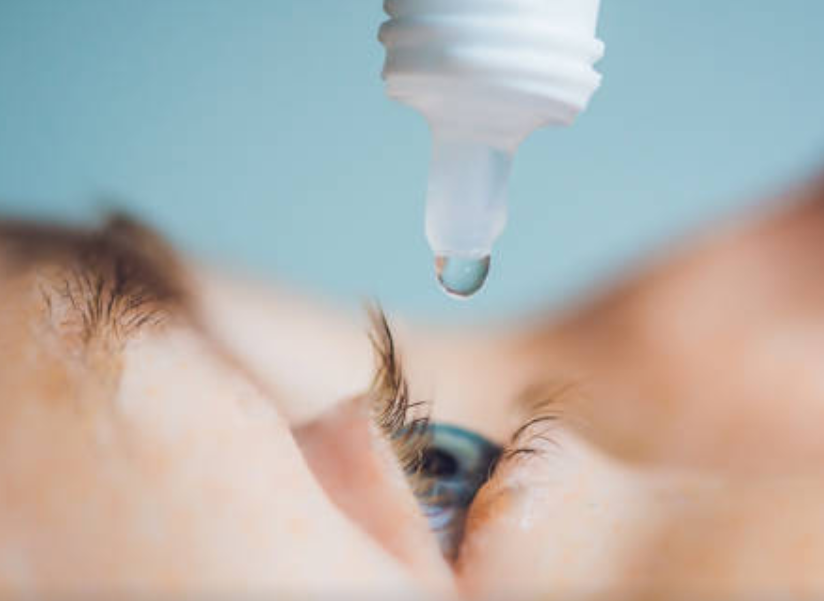An Overview Of PVA Material
Mukesh Doble, Anil Kumar, in Biotreatment of Industrial Effluents, 2005
Polyvinyl alcohol (PVA)
Polyvinyl alcohol (PVA) is a vinyl polymer joined by only carbon–carbon linkages. The linkage is the same as those of typical plastics such as polyethylene, polypropylene, and polystyrene, and of water-soluble polymers such as polyacrylamide and polyacrylic acid. Among the vinyl polymers produced industrially, PVA is the only one known to be mineralized by microorganisms. PVA is water soluble and biodegradable; hence it is used to make water-soluble and biodegradable carriers, which may be useful in the manufacture of delivery systems for chemicals such as fertilizers, pesticides, and herbicides.
PVA is completely degraded and utilized by a bacterial strain, Pseudomonas O-3, as a sole source of carbon and energy. However, PVA-degrading microorganisms are not ubiquitous within the environment. Almost all the degrading strains belong to the genus Pseudomonas, although some do belong to other genera (Chielliniet et al., 2003). Among the PVA-degrading bacteria reported so far, a few strains showed no requirement for pyrroloquinoline quinone (PQQ). From a PVA-utilizing mixed culture, Pseudomonas sp. VM15C and P. putida VM15A were isolated. Their symbiosis is based on a syntrophic interaction. VM15C is a PVA-degrading strain that degrades and metabolizes PVA, while VM15A excretes a growth factor that VM15C requires for PVA utilization.
J.T. Kloprogge, in Developments in Clay Science, 2017
12.8.2 Organo-Sulfonated Zr-PILC
A series of sulfonated polyvinyl alcohol (PVA)-Zr PILC nanocomposites were synthesized by Kar et al. (2016). A low molar mass PVA was sulfonated using chlorosulfonic acid. The sulfonated PVA was intercalated inside the parent Mt and Zr-pillared Mt (Zr PMt) matrix. In an alternative approach, the PVA was initially intercalated into the clay mineral and Zr PMt structure followed by in-situ sulfonation inside the clay mineral matrix (sulfonated-Zr PMt). For the parent clay mineral, a sharp intense band was observed at 3636 cm− 1 along with a broad less intense band at 3450 cm− 1 in the OH stretching region of the FTIR spectrum. These bands were assigned to, respectively, ν(MOH) and H2O ν(OH) modes of the clay minerals. In addition to the H2O ν(OH), the clay-polymer nanocomposites showed two less intense bands at 2850 and 2920 cm− 1 ascribed to the symmetric and asymmetric stretching vibrations of CH2 group present in the structural skeleton of the polymeric species as well as in the cetyl group of CTAB (cetyl trimethylammonium bromide). The band at 1630 cm− 1 was assigned by the authors as the bending vibration mode of OH groups of sulfonated-Zr PILC and PVA-sulfonated Zr PILC (PVA dispersed in Zr PILC followed by sulfonation). Its intensity suggested that pillaring with Zr-polycation increased the surface acidity. In addition to the discrete peaks between 700 and 950 cm− 1 related to the octahedral δ(MOH) modes of Mt, two additional bands were observed at 1155 and 1030 cm− 1 for all clay-polymer nanocomposites. These bands were ascribed to the S = O and O-S-O vibrations of the sulfonate (-SO3H) group present in the polymer skeleton (Cristovan et al., 2006; Zhang et al., 2010). The FTIR study clearly indicated the presence of sulfonated polymeric species in the interlayer spaces and that the clay mineral retained its structural integrity in the final clay polymer nanocomposite.
The Raman spectra of PVA intercalated Mt followed by sulfonation inside the clay mineral matrix and PVA sulfonated PMt nanocomposite materials are presented in Fig. 12.9. Both materials showed an intense band around 2920 cm− 1corresponding to the stretching vibration of the CH2 group present in the polymeric skeleton. A series of Raman bands were also observed at 1492, 1105 and 1055 cm− 1. The Raman band at 1492 cm− 1 was assigned to the shear mode of vibration of -CH2group of the sulfonated polymeric species (Prosanov and Matvienko, 2010; Kozai et al., 2012). The Raman band at 1105 cm− 1 was due to an OH deformation vibration (Prosanov and Matvienko, 2010). This band occurred in the spectrum due to presence of residual -OH groups that were not sulfonated during the sulfonation step. The band at 1055 cm− 1 in the Raman spectra of the clay polymer nanocomposites was due to an S-O vibration present in the sulfonated PVA. Such vibration has been observed earlier for nafion polymer and has been ascribed to the S-O vibration of the sulfonate functional group (Hara et al., 2011). Another notable feature was the occurrence of broad and less intense Raman bands for PVA sulfonated PMt nanocomposites as compared to the sulfonated PVA intercalated Mt. This observation indicated that the sulfonated PVA polymeric species were present in a well dispersed state in the PILC. However, agglomeration of the polymeric species occurs in the sulfonated PVA intercalated Mt with consequent development of partial crystalline character that was responsible for the sharp and intense Raman bands (Zhen et al., 2012). This observation corroborated XRD results indicating incomplete intercalation of sulfonated PVA species in the sulfonated PVA intercalated materials.
In Membranes for Industrial Wastewater Recovery and Re-use, 2003
Sizing
In the transformation of raw materials to textile products sizing is usually the first process in which wet processing is involved. Substances such as starch, modified starch, polyvinyl alcohol, polyvinyl acetate, carboxymethyl cellulose and gums are applied to the warp in order to increase its tensile strength and smoothness. During this operation wastewater results from the cleaning of sizing boxes, rolls, size mixer and sizing area. Their volume is low but, depending on the recipe used, can contain high levels of BOD, COD and TSS (Cooper, 1978). In the case of 100% synthetic warps sizing, if used, is usually carried out with synthetic polymers. Yarns for use as knitted fabrics are treated with lubricants (mineral, vegetable or ester-type oils) or waxes rather than sizes.
Tingting Xu, ... Steven Ripp, in Microbial Biodegradation and Bioremediation, 2014
5.3.1 Keeping the Bioreporters Alive and Healthy
For sustained, long-term environmental biosensing, the bioreporters must be packaged in a format that maintains their viability such that they are continuously available to report on their surroundings or can do so as rapidly as possible following a triggered resuscitation event. Encapsulants designed to maintain cells in a viable state for extended durations typically consist of liquid matrices to which the bioreporter culture is added; these then solidify to form sheets, layers, blocks, or discrete beads of cells. Agar, agarose, polydimethylsiloxane (PDMS), polyvinyl alcohol/polyvinyl pyridine copolymer, latex copolymer, carrageenan, polyacrylamide, alginate, polyurethane/polycarbonyl sulfonate, polyvinyl alcohol, and sol–gel silica glass are only a few of the matrices applied as bioreporter encapsulants (Date et al., 2010; Michelini and Roda, 2012). Encapsulation can also be as simple as drying the bioreporters onto a filter surface (Toba and Hay, 2005) or packaging lyophilized (freeze-dried) bioreporters into single-use test vials (Siegfried et al., 2012). The challenge is to retain the bioreporter cells within a microenvironment that contributes to long-term survival while maintaining compatibility with the measuring scheme in terms of optical clarity and minimizing signal interference, since these parameters ultimately affect assay sensitivity. Considering the vast number of biotic and abiotic factors that can impinge upon cellular bioreporter growth, survival, and longevity, effective encapsulation is a daunting challenge that has yet to be adequately solved; there likely will never be a universal matrix for doing so. Nonetheless, many research groups have demonstrated reasonably adequate microorganismal stability from days to months but, unfortunately, seldom under the authentic extreme conditions inherent to real-world environmental exposures. Other researchers have alternatively exploited what nature has already provided and used the innate ability of certain microorganisms to form spores as vehicles for long-term bioreporter storage (Knecht et al., 2011), or cultivated bioreporters in robust biofilm assemblages to enable resilient surface attachment on biocompatible materials followed by encapsulation (Ben-Yoav et al., 2011). Another well-applied option is to couple the bioreporter cells with surface-attached linkers, which typically entails chemical methods to facilitate covalent binding between the surface and functional groups on the cell (Fleming, 2010); nanomaterials have found a unique niche in this process that allows for high cell loading capacities with improved stability and viability (Dai and Choi, 2013). Surface-to-cell linkages can also be fabricated using antibodies targeted to cell surface antigens (Premkumar et al., 2001) as well as bacteriophages (bacterial viruses) that bind to specific cell surface receptors (Tolba et al., 2010).
B.K.G. Theng, in Developments in Clay Science, 2012
7.3.4 Template Synthesis
As the name suggests, this synthetic method is based on the in situ hydrothermal crystallization of clay mineral layers (from a gel) using selected water-soluble polymers as templates (Carrado, 2000; Carrado et al., 2000). In a typical experiment, a 2 wt% gel of silica sol, magnesium hydroxide, lithium fluoride and polymer in water is refluxed for 2 days (Figure 7.7). High polymer loadings (up to 86% in the case of polyacrylonitrile) may be achieved by sequential additions of polymer to the mixture at the end of each reaction period. By this method, nanocomposites of polyaniline, polyacrylonitrile, polyvinyl alcohol, poly(vinyl pyrrolidone), hydroxylpropylmethyl cellulose and polyacrylamide with varied silicate/polymer ratios have been obtained. The polyaniline nanocomposites are partially exfoliated, and their clay/polymer ratios are smaller than those of their counterparts prepared by in situ intercalative polymerization.
Template synthesis is essentially limited to water-soluble polymers, while the synthetic clay mineral formed under the conditions described above is a (poorly ordered) fluorohectorite. On the other hand, the method is potentially capable of promoting the dispersion of silicate layers in a one-step process. Template synthesis also offers the possibility of preparing porous inorganic materials. With reference to Figure 7.7, removal of the associated polymer from the nanocomposite by calcination (500 °C in air) and subsequent rearrangement of individual clay mineral layers yield mesoporous solids with pores between 4 and 10 nm in diameter. The pore size distribution is generally related to the molecular weight of the polymer used (Carrado and Xu, 1998). Template synthesis was also used by Yamamoto et al. (2005) to obtain poly(vinyl alcohol)–imogolite nanocomposites. The hybrid material was more transparent than the material prepared by blending freeze-dried imogolite with the polymer and showed superior mechanical and thermal properties.
Diane R. Nelson, ... Lorena Rebecchi, in Thorp and Covich's Freshwater Invertebrates (Fourth Edition), 2015
Preparing Tardigrades for Light and Electron Microscopy
After the sample has been fixed, mount individual specimens on microscope slides and observe them with phase contrast and/or DIC microscopy. Hoyer’s mounting medium (50 ml distilled water, 30 g gum arabic, 150 g chloral hydrate, and 20 ml glycerol) produces cleared, distended specimens, but the coverslip must be sealed (e.g., with epoxy paint) to ensure permanence. The amount of chloral hydrate may be reduced to decrease the extent of clearing of specimens, and potassium iodide (KI, 1 g) may be added to stain specimens slightly to increase resolution of morphological structures. Chloral hydrate is a controlled substance and requires a federal permit. Other media without chloral hydrate include Faure’s medium, glycerin, polyvinyl alcohol, and polyvinyl lactophenol. More permanent mounts with balsam or synthetic resins are not acceptable for phase microscopy.
Light microscopy (PhC, DIC) is used to observe the anatomy and the sclerified structures of tardigrades in vivo, or in stained and mounted tardigrades. In vivo observations of an active or asphytic animal (in a drop of water between a slide and a coverslip; Figure 17.15) are necessary to observe some pigments and structures (e.g., eyes, stylets, and organs) that can be lost after fixation. Live or unstained tardigrades should be observed using phase contrast and/or DIC microscopy (useful especially for fresh material).
To observe internal organs, gametes within the gonads, or chromosomes, the animals are fixed in Carnoy’s fluid and then stained with a drop of orcein or acetic carmine (in the latter case, they are mounted on permanent slides with Faure–Berlese’s mounting medium). Chromosomes are relatively large and easy to detect in females with oocytes at late vitellogenesis.
For SEM, tardigrades and eggs are fixed and dehydrated in absolute alcohol, transferred to liquid CO2, critical-point dried in CO2, and sputter-coated with 200–300 nm of gold or gold-palladium. The buccal–pharyngeal apparatus can also be separated from the animal, cleaned of the organic material, and observed with SEM.
TEM is used especially for the analysis of the cuticle, spermatozoa, and internal organs. The classical methods are effective, but each specimen must be punctured with a thin needle for proper fixation.
The confocal microscope is used for a three-dimensional view of the sclerified structures of tardigrades and their ornamented eggs mounted in media such as polyvinyl lactophenol. With fluorescence microscopy, thin optical sections are used to reconstruct three-dimensional internal and external structures of tardigrades, with a high spatial resolution in all three dimensions.
Thermochemical Treatment of Plastic Solid Waste
Paola Lettieri, Sultan M. Al-Salem, in Waste, 2011
1.1 Plastic Solid Waste, Generation and Trends
The amount of municipal waste produced on average by each European citizen is projected to increase from 520 kg in 2004 to 680 kg by 2020 [3]), an increase of 25%. Furthermore, waste production in the new European Union 12 (EU12) countries is projected to reach the current levels of those in the EU15 countries by 2020.
Plastics contribute to our daily life functions in many aspects. Household goods nowadays are mainly composed of plastic or plastic-reinforced materials, from packaging, clothing, appliances and electrical and vehicle equipments, to insulations, industrial applications, greenhouses, automotive parts, aerospace and mulches. Thus, plastic materials represent an important component of the municipal solid waste produced. Production of plastics has reached global maximum capacities levelling at 260 million tonnes (260 × 106 t) in 2007, whereas in 1990, the global production capacity was estimated at 80 × 106 t. It is estimated that production of plastics worldwide is growing at a rate of about 5% per year [4].
Over the past 70 years, the plastic industry has witnessed a drastic growth in the production of synthetic polymers represented by polyethylene (PE), polypropylene (PP), polystyrene (PS), polyethylene terephthalate (PET), polyvinyl alcohol (PVA) and polyvinyl chloride (PVC). In 1996, the total plastics consumption in Western Europe was estimated at 33.4 × 106 t, whereas in 2004, it was estimated at 48.3 × 106 t, increasing by an average of 4% per year. This brings a high estimate of almost 60% of plastic solid waste (PSW) being discarded in open space or landfilled worldwide [5]. In the United Kingdom, average consumption of plastic is currently in excess of 5 million tonnes per year (5 × 106 t a−1), with a distribution by market sector and plastic type as shown in Fig. 17.2 [6].
Traditionally, landfilling has been used as the major waste management method. However, European and national waste management policies have successfully resulted in an increase in recycling and incineration and a subsequent decrease in the amount of waste sent to landfill. Examples of legislations include the EU Packaging Directive (94/62/EC), introduced in 1994, aimed at increasing recycling and recovery of packaging, and the Landfill Directive (99/31/EC), introduced in 1999, aimed at diverting biodegradable municipal waste from landfill. These targets were subsequently revised by the EU, following which the U.K. government published the national packaging recycling and recovery targets for 2006 and beyond which required 23% of plastics waste to be recovered by 2006, rising to 25.5% by 2010.
Predictions for municipal waste management in the EU project an overall increase in recycling of up to 34%, an increase in energy recovery of up to 27% and a reduction in landfill disposal of up to 34% by 2020 [3]. While the increased waste quantities are expected to increase direct emissions, a net positive effect will result from increasing recycling and energy recovery which will represent savings on greenhouse gas emissions avoided, where recycling is expected to contribute to 75% of total avoided emissions by 2020.
Himanshu Patel, R.T. Vashi, in Characterization and Treatment of Textile Wastewater, 2015
1.2.2 Wet process
The wet process consists of (i) singeing, (ii) desizing, (iii) kiering, (iv) bleaching, (v) mercerizing, and (vi) dyeing. These processes are subjected to a series of operations, which require appreciable quantities of water at each stage. Figure 1.1 depicted the flowchart of general wet processes in textile industries.
Singeing
It is a continuous process in which the fabric travels near a series of jet burners at a faster rate through the machine in order to remove the protruding fibers from the surface. The flame burns off the fibers so as to render the surface of the fabric smooth, actually resulting in the burning of the infusible fibers to smoothen surface. Loading it with starch or other nonbiodegradable sizing agents strengthens the fiber. The wastewater from this process consists mostly of starch and softeners originating from the washing of various process vessels and sizing materials left over after the completion of operations. Carboxylmethyl cellulose (CMC) and polyvinyl alcohol (PVA) are also being used as substitutes for starch.
Desizing
After singeing, desizing is done to remove natural impurities and singeing compounds. Man-made fibers are generally sized with water-soluble sizes that are easily removed by a hot-water wash or in the scouring process. Certain types of enzymes are used to hydrolyze the starch. Removing starch before kiering is necessary because it can react and cause the color changes when exposed to sodium hydroxide in kier. Sometimes, acids may also be used for this purpose. Wastewater having high concentrations of organic material mainly consisting of breakdown products of sizing materials and agents used to bring about hydrolysis originates from desizing of fabric. Organic material is present in both dissolved and colloidal forms.
Kiering
The fibers from desizing may still contain grease, lubricants, antistatic agents, waxes, etc. They are removed by scouring with alkaline liquor containing caustic soda, soda ash, sodium silicate, sodium peroxide, etc., for several hours with the aid of stream. The entire operation is carried out on a batch basis, in which the spent liquor is blown out instantaneously.
Bleaching
The fabric after scouring is treated with bleach liquor. This liquor is mostly hydrogen peroxide. The other chemicals used are sodium chloride, formic acid, sulfuric acid, caustic soda, and hypochlorites to remove natural coloring material. Washing the fabric first with water and then with dilute acid and sodium bisulfate to remove last traces of chlorine and alkali follows bleaching. In the next step, the fabric is soaped, washed, and treated with optical whitening agent to improve whiteness of fabric. This operation contributes about 10-20% of the total pollution load. Hydrogen peroxide blending reduces the total pollution load in the wastewater causing no residual solids. The wastewaters from this unit contain soap and optical whitening agent.
Mercerizing
This process consists of treatment with a cold concentrated caustic alkali solution and washing with liberal amount of water in a countercurrent system. Mercerizing swells the fabric, imparting increasing dye affinity, tensile strength, and luster to the fabric.
Dyeing
The nature of wastewaters coming from this unit depends upon the use of different types of dyes and auxiliary chemicals. Classes of dyes include vat dyes, disperse dyes, acid dyes, basic dyes, direct dyes, reactive dyes, naphthol dyes, sulfur dyes, azoic dyes, developed dyes, fluorescent dyes, mordant dye, indigo dyes, and oxidation-based dyes. Dyeing section contributes 15-20% of the total wastewater flow. The wastewater is strongly colored, and the color changes too frequently because of the change in the types of dyes used.
Finishing
In this unit, the fabric is washed in an open soaping range to remove the unfixed dyes. Then, it is treated with starches to finish the fabric. The other materials may be dextrins, natural and synthetic waxes, and synthetic resins. Washing of the fabric to remove the unused color and cleaning of the color machine constitute major source of wastewater. The wastewater is strongly colored and contains fixing agent like gum, soap, and minerals.
C. Aguzzi, ... C. Viseras, in Developments in Clay Science, 2016
26.3.1 Tissue Engineering
Tissue engineering offers a means to provide biocompatible replacement tissue with mechanical and functional integrity. A critical step in tissue engineering is the designing of scaffolds with structure, composition, physicochemical, mechanical and biological features analogous to natural tissues. Scaffolds provide a three-dimensional (3D) environment that supports cell attachment, proliferation and differentiation, as well as enabling the transportation of nutrients and cell metabolites in tissue engineering (Patterson et al., 2010; Chrzanowski et al., 2013; Gaharwar et al., 2013; Song et al., 2014). Hydrogel (Gaharwar et al., 2013; Song et al., 2014) has been studied as a scaffolding material, especially for soft tissue regeneration, even if it usually has inferior mechanical properties as well as lacking adequate functionality, which hinders its wide application in regenerative medicine (Biondi et al., 2008). The incorporation of clay mineral nanoparticles improved the mechanical properties and functionalities of these systems, fulfiling the requirements of tissue engineering. The 3D geometry is related to pore size, porosity and interpore connectivity that represent key issues for accelerated tissue engineering application. With these premises, different clay minerals have been proposed as innovative platforms for tissue regeneration and biomaterial design because of their capacity to enhance stem and progenitor cell proliferation and differentiation (Dawson and Oreffo, 2013). Polymer electrospun with halloysite showed potential applications in the fields of tissue engineering, wound dressing and drug delivery (Wang et al., 2012). Halloysite and polyvinyl alcohol were used to prepare clay polymer nanocomposites (CPN) with improved osteoblast adhesion (Zhou et al., 2010). Electrospun CPN with tissue engineering (and drug delivery of tetracycline) applications were prepared with halloysite and polylactic-co-glycolic acid (Qi et al., 2010, 2012, 2013). According to its haemocompatibility, halloysite polymer nanocomposites were considered suitable as artificial tissue/organ substitutes (Zhao et al., 2013). Halloysite polymethylmethacrylate nanocomposites have been used as bone cements doped with gentamicin, providing slow release of the drug without compromising the CPN mechanical strength while enhancing bone adhesiveness (Wei et al., 2012). Halloysite polycaprolactone nanocomposite scaffolds showed improved mechanical properties, substantial protein adsorption, enhanced mineralisation and osteogenic differentiation compared to the polymer scaffold without the clay mineral (Nitya et al., 2012). Polyglycerol sebacate was filled with halloysite nanotubes to obtain elastomeric nanocomposites with optimal combination of compliance and a degradable profile compared with the pure counterpart, showing excellent resilience and satisfactory biocompatibility in vitro to be used as a soft tissue engineering material (Chen et al., 2011). Halloysite chitosan nanotubes nanocomposite scaffolds were prepared by combining solution-mixing and freeze-drying techniques exhibiting a high porous structure and cytocompatibility with great potential for tissue engineering (Liu et al., 2013).
Imogolite is also receiving considerable attention in tissue engineering for its excellent adsorption properties and nanotubular shape. Reinforcement of polymeric materials with imogolite nanotubes has recently been described in the research literature (Yamamoto et al., 2005a,b; Yah et al., 2010; Shikinaka et al., 2011). These findings have been exploited to obtain collagen- (Nakano et al., 2010) and gelatine-based (Teramoto et al., 2012) nanocomposite hydrogels, showing improved properties and promising potential in pharmaceutical and tissue engineering development. Imogolite nanocomposite scaffolds exhibited good biocompatibility and enhancement effects of proliferation over mouse osteoblastlike cells (Ishikawa et al., 2010a). With regard to safety requirements, imogolite nanotubes must demonstrate no potential toxicological effects on humans. The possible cytotoxic and genotoxic effects of synthetic imogolite-like nanotubes have been evaluated, revealing no cytotoxic activity in human fibroblast cells up to 0.1 mg/mL of nanoparticles, whereas DNA damage depended on the cell uptake and aspect ratio of the nanotubes (Liu et al., 2012). Imogolite nanotubes offer a wide range of positive characteristics as scaffolds for osteoblastic proliferation and differentiation and are a both suitable and interesting alternative in bone tissue engineering (Ishikawa et al., 2010b). Imogolite nanotubes were applied to cell cultures to compare their properties as scaffolds with a conventional culture dish and a carbon nanotube scaffold. The scaffold containing more imogolite presented the best roughness, wettability and protein adsorption ability. In addition to these advances, modification and functionalisation of imogolite nanotubes (Kang et al., 2010, 2011) will probably offer new perspectives on biomedical field in the next several years.
Mukesh Doble, Anil Kumar, in Biotreatment of Industrial Effluents, 2005
Reactors
A baffled anaerobic reactor was used to degrade a cotton textile mill effluent using sucrose, peptone, and nutrient as cosubstrates. When a hydraulic retention time of 20 h was used, 70% COD (influent = 1000 mg/L) and 90% color removal rates were achieved. A two-stage upflow anaerobic sludge blanket (UASB) reactor operated with tapioca as the cosubstrate (1,500 mg/L) achieved a 70% color removal and an almost 90% COD reduction. When only one UASB reactor was used without any cosubstrate, a 60% COD reduction and 80% color removal were achieved.
Anaerobic treatment of textile wastewater and decolorization using a fluidized bed reactor with an external carbon source in the form of glucose led to an 82, 94, and 59% COD, BOD, and color removal, respectively, at a hydraulic retention time (HRT) of 24 h (Sen and Demirer, 2003). Pumice was used as the support material for the growth of the microorganisms. Various types of reactors (including a sequencing batch reactor, UASB, anaerobic filter, batch, and fluidized bed) have been used to treat effluents containing synthetic phthalocyanine, diazo, azo, reactive, anthraquinone, and basic dyes under anaerobic conditions (Sen and Demirer, 2003).
Synthetic wastewater from the desizing and dyeing sections of a textile mill was treated in an anaerobic/aerobic sequential batch reactor (SBR) with a hydraulic retention time of 2.6 days (Shaw et al., 2002) The desizing section effluent contained starch, polyvinyl alcohol (PVOH), and carboxymethyl cellulose (CMC), and the dyeing section effluent contained alkali, sodium salts, and an azo dye (Remazol Black). The reactor cycle (∼5 h and 50 min) consisted of fill, anaerobic reaction, aerobic reaction, settle, decant, and idle (Fig. 11-4). Color and dye reduction was greater than 90%, and partial degradation of PVOH was observed. Decolorization improved with aeration despite the reduction in total organic carbon (TOC) removal, indicating that the decolorization process was independent of the methanogenic activity as long as the redox potential remained low. It has been reported that PVOH is more easily degraded under aerobic conditions.
Yu et al. (1996) achieved a 92% degradation of a 75,000 MW PVOH in two reactors — one was an anaerobic SBR, the other was aerobic. A simulated cotton mill effluent was treated using a UASB and an aerobic reactor placed in series; the COD, BOD, and color removal efficiencies achieved were 88, 99, and 77%, respectively. Most of the color removal took place in the UASB (O’Neill et al., 2000).
Effluent from the Sirolan CF process was aerobically treated using a laboratory-agitated fermenter and 100- and 3000-L pilot-scale airlift fermenters with external recycle for 24-, 45-, and 94-h retention times, respectively, to achieve 65, 55, and 95% COD, TOC, and BOD removal efficiencies, respectively (Poole et al., 1999). The biomass used to treat this effluent was identified as from the genus Epistylis. A combination of the Sirolan CF process followed by aerobic degradation could remove 90% of the COD, much more than any other process, but this process requires high capital and operating expenditures.
Textile effluent was processed in a pressurized bioreactor (∼3 bar of pressure) coupled with an ultrafiltration membrane unit for sludge retention. The treated effluent was then processed in a nanofiltration unit and was good enough to be reused in the plant. The bioreactor was operated at very high biomass concentration, but the excess sludge production was very small (Krautha, 1996). A pilot-scale dynamic up-flow sand filter was used as a biofilm reactor for decolorization and denitrification as well as for filtration of suspended solids from a pretreated textile effluent. Biomass growth and the sloughing of biological film did not prevent the removal of high concentrations of influent suspended solids. At low nitrate-loading rates, the filter followed the ideal plug-flow hydrodynamics. In the lower part of the filter, denitrification removal rates followed zero-order kinetics, while in the upper part of the filter, denitrification followed half-order kinetics (Canziania and Bonomoa, 1998).
We use cookies to help provide and enhance our service and tailor content and ads. By continuing you agree to the use of cookies.
Copyright © 2018 Elsevier B.V. or its licensors or contributors. ScienceDirect ® is a registered trademark of Elsevier B.V.







